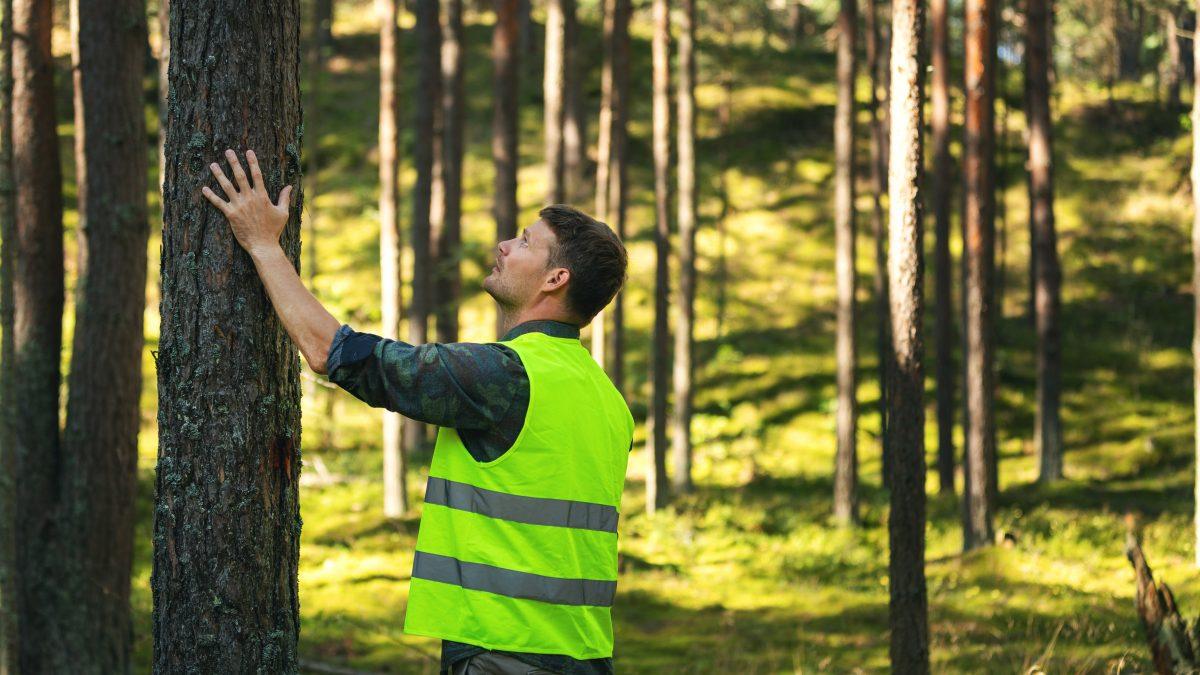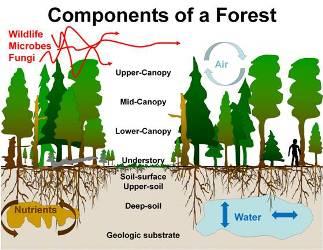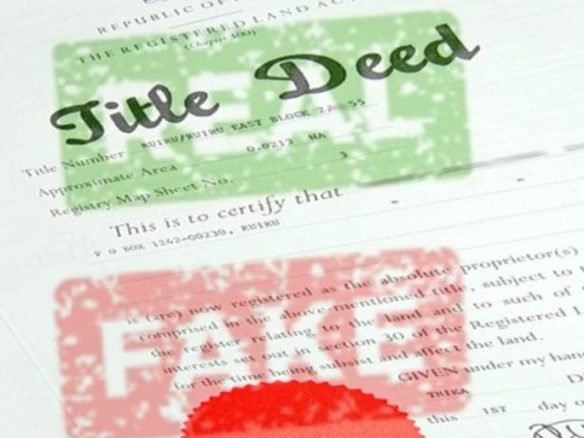Forest Valuation: Methods, Importance, and Key Factors in Valuing Forest Land
Forest valuation is the process of determining the economic worth of forests and forest land, taking into account both tangible and intangible benefits. Unlike typical real estate valuation, forests provide a unique mix of timber, non-timber products, ecosystem services, and conservation benefits. This makes forest valuation more complex and multifaceted than ordinary land valuation.
As demand for timber, carbon credits, eco-tourism, and sustainable land management continues to rise, accurate forest valuation has become critical for governments, investors, conservation groups, and private landowners.
Why Forest Valuation is Important
Investment Decisions: Helps investors assess the profitability of forest plantations or natural forest concessions.
Conservation and Carbon Markets: Provides a financial basis for forest conservation, carbon trading, and climate finance.
Land Transactions: Establishes fair market value for buying, selling, or leasing forest land.
Policy and Regulation: Guides government taxation, royalties, compensation for land acquisition, and forest licensing.
Sustainable Management: Encourages forest owners to balance economic use with environmental protection.
In short, forest valuation ensures that both the economic returns and the environmental benefits of forests are properly recognized.
Main Methods of Forest Valuation
1. Market/Comparable Sales Approach
Definition: Values forest land by comparing it with recent sales of similar forest properties.
Key Considerations:
Timber species and age structure
Forest size and accessibility
Proximity to sawmills, roads, or markets
Legal restrictions or conservation easements
Best Use: Where active markets for forest land exist and reliable sales data is available.
This method is straightforward but limited in regions with few transparent transactions.
2. Cost Approach
Definition: Determines forest value based on the cost of establishing or regenerating it, adjusted for age and current condition.
Components:
Site preparation and planting
Silvicultural operations (thinning, pruning, pest management)
Road construction and fire protection
Best Use: For valuing young plantations, newly established forest projects, or afforestation programs.
This method does not capture long-term revenue potential but is useful in early stages of forest development.
3. Income Approach (Discounted Cash Flow – DCF)
Definition: The most widely used method for timber valuation and commercial forests.
Steps:
Estimate growing stock and sustainable harvest levels.
Forecast revenues from timber, fuelwood, and non-timber forest products.
Deduct harvesting, management, transport, and overhead costs.
Incorporate additional revenues from eco-tourism, carbon credits, or hunting leases.
Apply a discount rate to calculate the Net Present Value (NPV).
Best Use: For mature plantations, managed forests, and commercial concessions.
Strength: Reflects the long-term earning potential and market dynamics of the forest.
4. Contingent Valuation & Non-Market Approaches
Forests provide ecosystem services such as biodiversity conservation, recreation, carbon sequestration, and watershed protection that often lack direct market prices. These are valued using:
Contingent Valuation (CV): Surveys to estimate people’s willingness to pay for forest conservation or access.
Travel Cost Method: Uses visitors’ travel expenses to estimate recreational value.
Carbon Credit Valuation: Assigns value to carbon storage potential, increasingly important in carbon trading markets.
Best Use: For natural forests, conservation areas, and protected reserves where non-timber benefits outweigh timber income.
5. Royalty Capitalization Method
Definition: Calculates forest value based on expected royalties from leasing timber harvesting rights, eco-tourism concessions, or hunting rights.
Process: Forecast royalty income → apply a capitalization or discount rate.
Best Use: When forest land is leased rather than directly managed by the landowner.
This is common in forestry concessions, community forests, and government-owned reserves.
Key Factors Affecting Forest Valuation
When conducting a forest valuation, several interrelated factors must be assessed:
Quantity and Quality of Resources
Timber volume, growth rates, age class distribution, and species mix.
Non-timber products like fruits, honey, medicinal plants, and bamboo.
Location & Accessibility
Proximity to markets, processing industries, and transport networks.
Terrain, slope, and road access affect harvesting costs.
Market Conditions
Global and local timber demand.
Price volatility in wood products, carbon credits, and eco-tourism markets.
Legal & Regulatory Environment
Land tenure security, forest use rights, and government royalties.
Environmental restrictions and logging bans.
Management Practices
Sustainable forest management (SFM) and certification (FSC, PEFC).
Risk of illegal logging or encroachment.
Environmental & Ecosystem Value
Biodiversity conservation and habitat value.
Carbon sequestration and water regulation services.
Economic Risks
Timber price fluctuations, climate risks (fires, pests, storms), and political instability.

Comparative Table: Forest Valuation Methods
| Method | Best for | Strengths | Limitations |
|---|---|---|---|
| Market/Comparable Sales | Forest land transactions | Reflects market demand | Requires active, transparent markets |
| Cost Approach | Young plantations, afforestation | Simple, based on actual investment | Ignores future revenue potential |
| Income Approach (DCF) | Commercial forests & plantations | Captures long-term profitability | Requires reliable forecasts and discount rates |
| Contingent/Non-Market | Conservation forests, ecosystem value | Captures biodiversity, recreation, carbon | Subjective, survey-based |
| Royalty Capitalization | Leased forests, concessions | Reflects owner’s income from royalties | Dependent on lease terms and operator ability |
Forest valuation is essential in today’s world where forests are no longer seen only as timber sources but as critical natural assets that support economies, societies, and the global climate.
For commercial plantations → Income Approach (DCF) provides the most accurate results.
For conservation forests → Contingent valuation and carbon credit valuation capture environmental benefits.
For land transactions → Market/Comparable Sales is most relevant.
For leased forest rights → Royalty Capitalization is widely applied.
By applying the right method, stakeholders can ensure sustainable forest use while capturing both financial and ecological value.
FAQs on Forest Valuation
1. What is forest valuation in simple terms?
Forest valuation is the process of determining how much a forest is worth, considering timber, land, and environmental benefits.
2. How is timber valued in forests?
Timber is typically valued using the income approach (DCF), based on expected harvest revenues minus costs, discounted to present value.
3. Can natural forests be valued?
Yes. Natural forests are often valued for non-market benefits such as biodiversity, recreation, and carbon storage.
4. What is the role of carbon credits in forest valuation?
Carbon credits provide an additional income stream, increasing forest value in regions participating in carbon trading markets.
5. Why is the market approach limited in forestry?
Because forest land transactions are often rare, and comparable sales data may be scarce or not transparent.
6. Which valuation method is best for young plantations?
The cost approach, since it reflects the investment already made in establishment and early management.
7. How does forest certification affect valuation?
Forests certified under FSC or PEFC often command higher market prices due to sustainability assurance.
8. Can non-timber forest products be valued?
Yes. Products like honey, mushrooms, bamboo, and medicinal plants can be included in valuation using income projections.
9. Do governments use forest valuation?
Yes, governments use it for taxation, compensation, licensing, and policy-making in forestry management.
10. What challenges exist in valuing forests?
Challenges include long growth cycles, uncertain market data, climate change risks, and difficulty assigning value to non-market services.

Understanding the Intrinsic Value of Forest Ecosystems
Forests are much more than just collections of trees; they represent a complex web of life that plays an invaluable role in maintaining planetary health. The intrinsic value of these ecosystems cannot be quantified solely in economic terms. Instead, they encompass a rich tapestry of ecological functions, cultural significance, and social benefits. As a notable example, forest ecosystems act as critical carbon sinks, absorbing meaningful amounts of carbon dioxide from the atmosphere, thus mitigating climate change. Furthermore, they provide crucial habitat for an array of biodiversity, supporting everything from the smallest microorganisms to majestic mammals.
Beyond their ecological functions, forests hold immense cultural and spiritual significance for many communities worldwide. These landscapes are often intertwined with local traditions, folklore, and practices, signifying a vital source of identity and belonging. The ‘non-monetary’ contributions of forests include:
- Recreational Opportunities: Hiking, birdwatching, and camping enhance physical and mental well-being.
- Medicinal Resources: Many pharmaceutical products are derived from compounds found in forest flora.
- Watershed Protection: Forests play a crucial role in maintaining the quality and quantity of freshwater resources.
This multifaceted approach to understanding forest ecosystems emphasizes the need for sustainable management practices that honor both their intrinsic and functional values. To effectively illustrate the integrated benefits of forests, consider the following table:
| Forest Benefit | Type | Example |
|---|---|---|
| Carbon Sequestration | Ecological | Absorption of CO2 |
| Cultural Heritage | Cultural | Indigenous practices |
| Biodiversity Hotspots | Ecological | Habitat for endangered species |
| Eco-tourism | Economic | Guided nature walks |




Join The Discussion